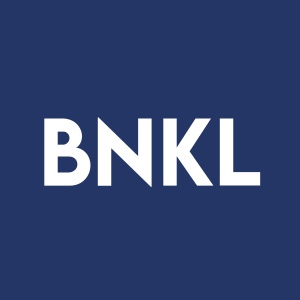BIONIK Laboratories Reports 15-20% Increase in Therapeutic Gains on InMotion® Robotic Devices in New Patient Outcomes Data Report
BIONIK Laboratories Corp (OTC-PINK:BNKL) released a whitepaper demonstrating significant clinical benefits of its InMotion Therapy Robots for stroke patients. The study revealed that patients showed a 15-20% improvement in motor skills over 14 days, with increased therapy sessions correlating to greater gains. Specifically, improvements included 19.7% in Mean Velocity and 15.1% in Smoothness of movements. The use of InMotion robotic devices has tripled in U.S. rehabilitation centers since 2019, with over 250 patients benefiting monthly through partnerships with Kindred hospitals.
- Patients reported 15-20% improvement in motor skills over a 14-day period.
- Increased therapy sessions correlate with greater improvement, with some metrics showing increases of up to 19.7%.
- The use of InMotion robots has tripled in U.S. rehabilitation centers since 2019.
- None.
A new whitepaper from
BIONIK’s products of InMotion® Robots for rehabilitation following stroke and other neurological conditions help patients to regain arm and hand movement. The reported clinical gains highlighted in the whitepaper show greater therapeutic gains associated with an increase of InMotion® therapy sessions for patients suffering from upper-extremity motor impairments. For all metrics measured, patients who had three or more sessions within a 14-day period had improved at least
-
15.1% increase in improvement of Smoothness, which is defined by the measure of the smoothness in the velocity of arm movement. Smoothness is important for tasks such as independent feeding and cooking. -
17% increase in improvement with Movement Efficiency, or the ratio of the total distance of the patient’s movement path with respect to the straight-line distance between the targets. A larger value indicates a greater ability to directly move between two points. -
18.1% increase in improvement with Motion Jerk, the time derivative of acceleration. Motion jerk is an indication of the patient’s control of arm motion and ability to produce smooth movement. -
19.7% increase in Mean Velocity, the velocity of a patient’s movement from target to target.
“Asset utilization is a priority for both hospital and out-patient management teams, and with InMotion’s data showing an increase in patient gains across various movements, we’re thrilled to offer a solution that will engage clinicians to employ the devices to garner the same positive patient outcomes,” said
“Data is at the core of our products, and building on our foundation of technology and software,
The number of hospitals and rehabilitation centers in the
To access a copy of the whitepaper, please visit: https://info.bioniklabs.com/whitepaper_iot_data_therapy_gains
To learn more, visit our website: www.bioniklabs.com
About
For more information, please visit www.BIONIKlabs.com and connect with us on Twitter, LinkedIn, and Facebook.
Forward-Looking Statements
Any statements contained in this press release that do not describe historical facts may constitute forward-looking statements. Forward-looking statements, which involve assumptions and describe our future plans, strategies, and expectations, are generally identifiable by use of the words "may," "should," "would," "will," "could," "scheduled," "expect," "anticipate," "estimate," “possible,” "believe," "intend," "seek," or "project" or the negative of these words or other variations on these words or comparable terminology.
Forward-looking statements may include, without limitation, statements regarding (i) the plans and objectives of management for future operations, including plans or objectives relating to the design, development and commercialization of robotic rehabilitation products and other Company products, (ii) a projection of income (including income/loss), earnings (including earnings/loss) per share, capital expenditures, dividends, pipeline of potential sales, capital structure or other financial items, (iii) the Company's future financial performance, (iv) the market and projected market for our existing and planned products and (v) the assumptions underlying or relating to any statement described in points (i), (ii), (iii) or (iv) above.
Such forward-looking statements are not meant to predict or guarantee actual results, performance, events or circumstances, and may not be realized because they are based upon the Company's current projections, plans, objectives, beliefs, expectations, estimates and assumptions, and are subject to a number of risks and uncertainties and other influences, many of which the Company has no control. Actual results and the timing of certain events and circumstances may differ materially from those described by the forward- looking statements as a result of these risks and uncertainties. Factors that may influence or contribute to the inaccuracy of the forward-looking statements or cause actual results to differ materially from expected or desired results may include, without limitation, the Company's inability to obtain additional financing, the inability to meet listing standards to uplist to a national stock exchange, the significant length of time and resources associated with the development of our products and related insufficient cash flows and resulting illiquidity, the impact on the Company’s business as a result of the Covid-19 pandemic, the Company’s continued going concern qualification, the Company's inability to expand the Company's business, significant government regulation of medical devices and the healthcare industry, lack of product diversification, volatility in the price of the Company's raw materials, and the Company's failure to implement the Company's business plans or strategies. These and other factors are identified and described in more detail in the Company's filings with the
View source version on businesswire.com: https://www.businesswire.com/news/home/20220329005389/en/
Media:
FischTank PR
Ashley@fischtankpr.com
Investor Relations:
PCG Advisory
sprince@pcgadvisory.com
646.863.6341
Source:
FAQ
What are the findings of the BIONIK Laboratories' new whitepaper?
How has the use of InMotion robots changed in hospitals?
What improvements did stroke patients experience with InMotion therapy?







